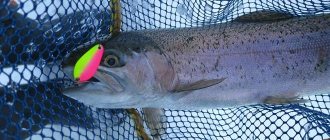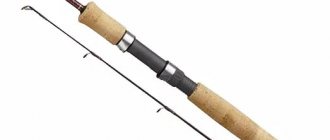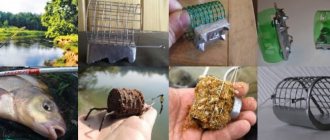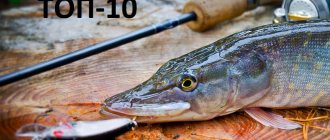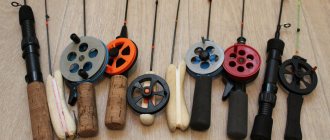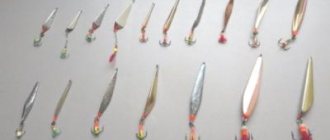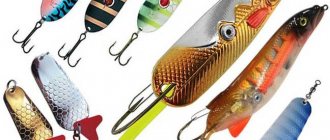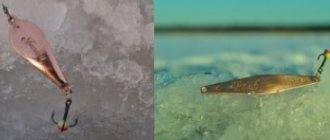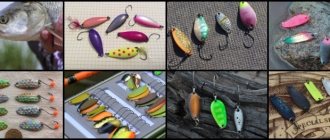Tactics and strategy for using spinners on striped predators
Depending on the fishing conditions and the expected size of the predator, the weight, shape of the petal, color, size and weight of the spinners - both oscillating and rotating - are selected. Wiring, search horizon and other parameters also vary.
About fishing with spinners
The shape of the petal has a fundamental place in the game of the bait. According to the Meps classification, there are three main forms - “long comet aglia”.
Angle of deviation from the axis of rotation of the petals from left to right: aglia, comet, long
The narrower the petal, the smaller its angle of rotation and stubbornness during wiring. In most cases, perch prefers a slow lazy retrieve, in which the blade rotates to the point of failure of the blade, practically falling into a spin. It is worth taking this into account and selecting the shape of the petal so that such animation can be implemented. A long-type petal is appropriate in currents, an aglia in reservoirs without a current and, if necessary, hold a spoon in the upper layers of the water area above grass or water lilies, a comet is the most universal option and is suitable in most cases.
The lower you need to move the spinner, the narrower the petal should be and vice versa.
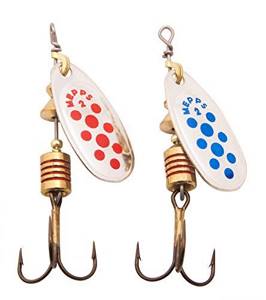
In spring and summer, rotating spinners with a weight on the core are most often used, less often so-called in-line clampless spinners, where the petal is located directly on the axis. Inline spinners start up well and do not lose their play when changing the flow speed and the speed of the retrieve. Therefore, we can recommend them for use on rivers with changeable currents.
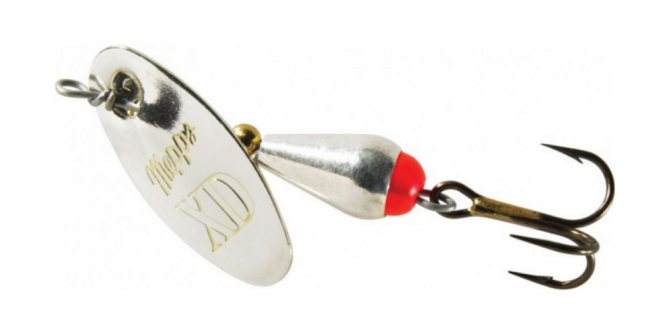
In the fall, decent perch migrate to deep-water edges, holes and pits. In such places it is good to catch it with compact front-loaded spinners on various variations of uniform retrieve, as well as a jig step.
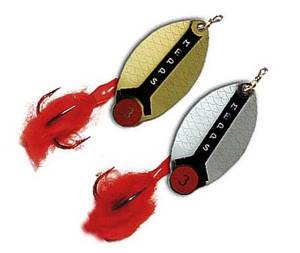
Mepps Lusox is a front-loaded spinner, number 1-2 is good for large perch.
It is important to consider the quality and thickness of the material from which the spinner is made. Without going into subtle matters in the theses, the situation is like this:
- It is worth choosing baits from noble metals - brass, copper, onitskovka, etc. Such spinners play more stable and keep the blade rotating at the lowest speeds.
- The thinner the thickness of the petal material, the faster the spinner starts, but this also has a downside - all other things being equal, the rotation of the petal on such a spinner will be faster than one with a thickness of 0.2-.0.3 mm greater. For example 0.6 versus 0.4 mm.
- Rotators with a thinner blade are good on still waters, with a thicker blade on slow/medium flow. The first ones start faster, but they can be carried out more slowly, which is important for reservoirs without a current.
About wiring . Most often, uniform wiring is used on the verge of petal failure. Various adjustments with the tip of the blank are possible - with a certain chaotic change in the speed of movement and rotation of the petal - both acceleration by detonation and deceleration by moving the blank away from you towards the bait are possible. We select the rhythm experimentally. For a back-loaded rotator, wave-like animations are used - here you need to experiment.
Front-loaded ones accept step-by-step or explosive wiring. Often this option works for passive perch, especially large ones.
Practical recommendation for selecting wiring speed:
- Step 1. Be sure to collect sensitive gear that will allow you to feel the work of baits in a given weight range.
- Step 2. We carry out a new, untested spinner in shallow water at the minimum possible speed, remembering the sensations.
- Step 3. When fishing at working depths and distances, the sensations should be similar to those obtained in step 2.
- Step 4: Extras! The sensations from playing spinners should be transmitted to the hand as a light low-frequency vibration, with virtually no sensation, but NOT a buzzing sound! Otherwise, this is fast wiring and the rate of unwinding the cord needs to be reduced.
The colors are worth mentioning separately. This is also an important point to consider. In muddy spring water, chemical flower spinners are preferred. The same colors are also relevant at dawn - early in the morning and in the evening at sunset. In the daytime, natural colors and various calm fluoes work well - white, cloudy, brown.
On a bright day, dark colors, even black, often show excellent results.

Black Fury - high-quality perch lure
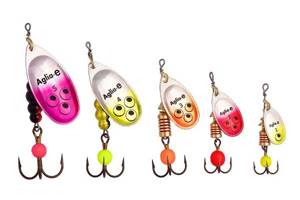
Good spinners with bright colors and a bead-shaped attack point on the anchor
Fact! Matte colors are more catchy than shiny ones.
About catching perch with spoons
When fishing with spoons, there are slightly fewer nuances - they forgive more mistakes than spinners. In spring and summer, micro-oscillators up to 5-6 cm are almost always used for perch. To avoid repetition, links to detailed thematic materials: about micro-oscillators - selection rules, wiring and other important nuances are detailed in our article.
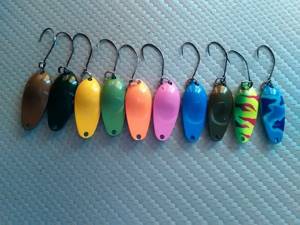
Waterland Renge is a chic Japanese product, the price tag is steep, but you have to pay for quality
In the autumn, larger baitfish may enter to catch deep-sea spots.
Learn more about how to catch perch on a spinning rod using all types of baits - spinners, spinners, jigs and wobblers.
Here we note that, unlike rotating ones, oscillating spoons are successfully used for catching perch vertically off the ice in winter.
Bait selection criteria
Below are tips on which bait is best to choose depending on the characteristics of the reservoir:
In small rivers
The basis of the perch's diet is mostly the fry of the fish that are found there; these can be roach, bleak, gudgeon or other species of river inhabitants. All of them are united by the peculiarities of the body shape, which is tall and long, which is why preference should be given to appropriate baits that are similar to petals.
During night or early morning fishing, silver spoons are especially effective . Daytime fishing is fundamentally different; here you can experiment with baits of copper and dark colors.
If there is an abundance of fry in the river, then silver baits can be effective during the daytime, so it is best to try different types and check which prey responds better to a particular body of water.
Black lures are often used in clear water and at shallow depths, since in such conditions the fish reacts not to tints or reflections, but primarily to the vibrations created.
On forest lakes or quarries
Petal baits will also be effective here, but it is recommended to choose the darkest varieties. This is primarily due to the fact that in such reservoirs bleak and roach are virtually never found, so the main prey of perches are fry of tench or crucian carp.
Many fishermen noted that it is much more effective to use baits with green fluorescent splashes, but this predator reacts very poorly to orange ones. However, in some lakes this rule may not apply, so it is a good idea to check all your options.
On reservoirs
Catching bass is much more difficult, mainly due to the difficulty of identifying the most effective bait. It has been noticed that the predator responds best to petal-shaped spoons, the weight of which does not exceed 5-7 grams, while it does not have specific color preferences.
For this reason, most likely, you will have to personally try out various options in order to understand what kind of prey the perch is accustomed to in a particular body of water. Sometimes bright green models are the most effective, but this rule does not always apply.
When fishing in reservoirs, if possible, it is recommended to interview local fishermen who know all the features and preferences of the local predators.
Selection of the best spinners for catching perch - TOP 10 best, general recommendations and rating
Let's look at the general principles of selection. It is worth noting that, from the manufacturer’s point of view, three clusters of rotating and oscillating spinners can be used for perch - homemade single specimens, from craftsmen (Maniacs and others) and serial ones from top manufacturers. We deliberately avoid the Chinese , especially when it comes to small rotating spinners, which are used for minke whales. For the most part, they simply don’t work at all! In principle, all three options are alive and have a place to be. But for beginners, we would recommend starting with branded spinners and vibrators (not necessarily expensive, middle class ones are also possible) and, if possible, purchasing several spinners from recognized masters of their craft - they can be easily found on specialized forums.
The spinner numbers for perch are 000-2 according to the Meps classification; spinners are most often used from 2 to 6 cm. Only for large humpback perch does it make sense to use larger baits.
Fun fact! Large humpback perch go better to numbers 3-4 along the Meps, while outright small things are cut off. If you want to catch only trophy and worthy perch, you should take this fact into account. It is also worth considering that pike do not disdain such spinners; this must be remembered when equipping a spinning rod.
A high-quality spinner should start with a slight tug and then hold the line without failure in the rotation of the petal - this issue is especially difficult and acute with numbers 000-0. It is worth taking this into account and purchasing only original spinners of the smallest sizes and from well-known manufacturers.
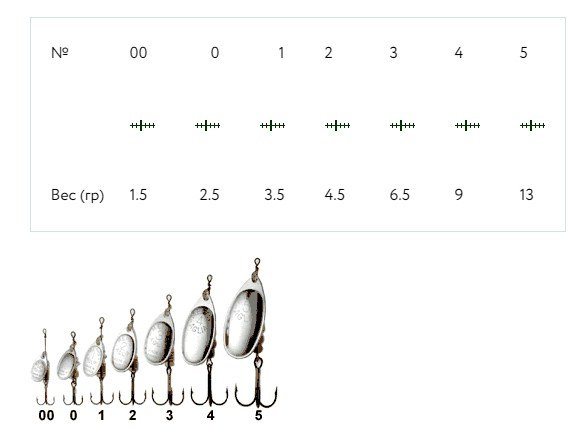
How to make homemade spinners with your own hands:
Fishing with maniacs:
About Mepps turntables:
Rating of the best
There are a great variety of spinners, both spinners and micro spinners, and it was difficult to choose just 10, but we tried to identify those models (model ranges) that are the most versatile and catchy in most cases. The rating, of course, is conditional and is based on the author’s own experience and reviews of colleagues.
Important! It is not the bait that catches the fish, but the angler. And it’s best to use precisely those baits that he believes in and that he understands. Changing from one type of bait to another is quite difficult, especially for a beginner. Therefore, we recommend “overgrowing” with spinners gradually, without scattering in all directions, although with such a variety it is difficult.
TOP 10 rotating and oscillating lures for perch, enough to catch a striper in almost any situation:
Rotators:
- Spinner Maniac. Excellent ultralight spinners from the Ukrainian master Igor Nepomniachtchi. A variety of shapes, weight from 1 to 5 grams. The downside is that it’s quite difficult to get in Russia. But it's worth it!
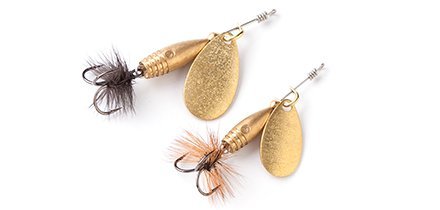
- Daiwa Silver Creek. Weight 6 and 9 grams. The entire line of petals and weight distributions is working. The body is made in the form of a fry. Very long-range, holds the jet and the tracking horizon perfectly. Working depths up to 3 meters.
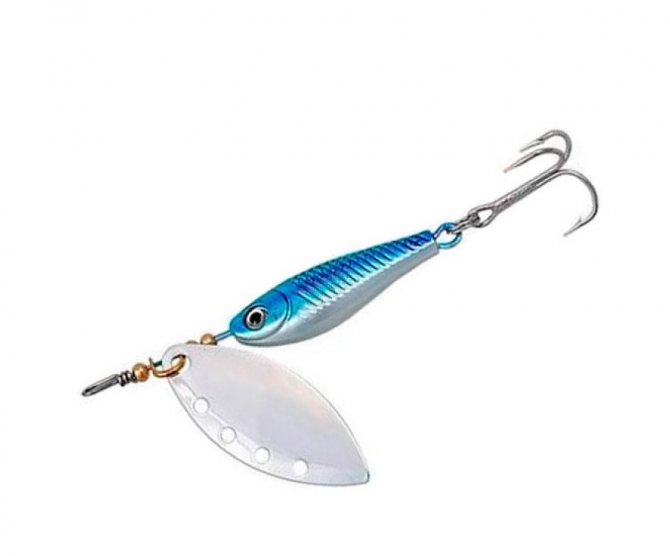
- Mepps Aglia, Comet (Black Fury), Longue - a classic, we recommend the entire line - select depending on fishing conditions in the required weight, shape and size. The most working numbers are 0-2, but it is better to take smaller numbers 0000-00 from the same Maniac, or similar ones from other craftsmen.
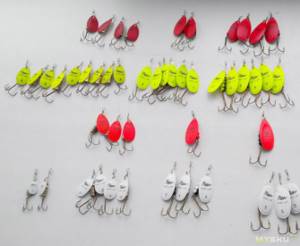
- Blue Fox Super Vibrax - a very good and inexpensive spinner, number 1-2 for perch. Various fluo colors are very good.
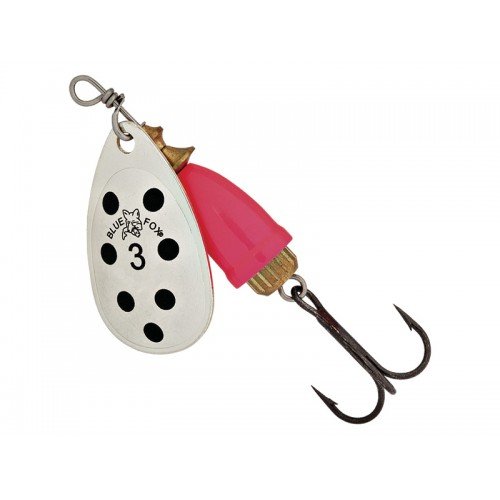
- Various inline turntables (Lukris Sella, Mepps XD, Panther Martin), as well as front-loaded (Abu Garcia Morrum, Mepps Lusox).
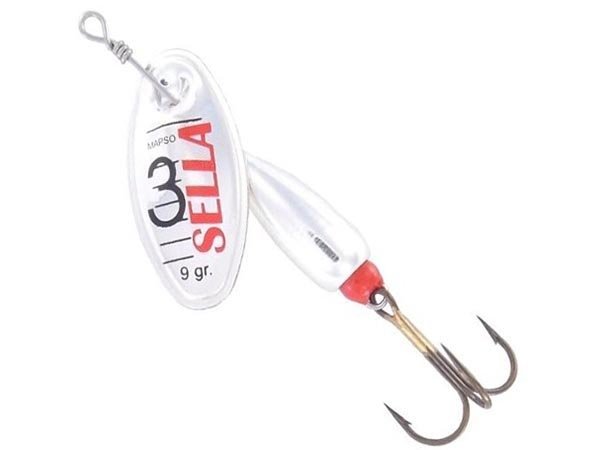
Oscillators (briefly, there is a detailed review of micro-oscillators on the website, link above):
- Smith Pure.
- Waterland Gater Spoon.
- Waterland Cherry Bauer.
- Acme Kastmaster.
- Nories Masukuroto.
Blitz tips
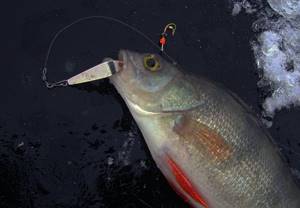
To summarize, here are some tips from experienced fishermen that can provide invaluable assistance when catching perch, especially if this process is carried out by a beginner:
- You must try to avoid awkward and sudden movements , since perch is a rather shy fish that will be wary of the bait if its game is not similar to the behavior of a real fry. Dexterity in this process comes only with experience, so you need to constantly train and improve your skills.
- The choice of a suitable spoon depends not only on the type of reservoir, but also on the weather, the expected size of the prey, and the preferences of the fish in a particular place. Often, even the most experienced fishermen do not select the right bait the first time. For this reason, it is recommended to obtain information in advance about the reservoir where fishing will be carried out. The main assistance in this can be provided by local fishermen, who already know the characteristics of predators well and can tell you which bait he prefers.
- When catching perch with a spinner , as with other methods, it is recommended to use fertilizer; bran or bloodworms are best. The best option would be to place the feeding mixture in a special feeder, which allows you to point-feed the area and attract small fish to it, followed by predators.
- For perch fishing, it is best to choose the clearest days, since that is when the best bite is observed.
Briefly about the necessary equipment
The main point is that the tackle must match the size of the baits used. Both in terms of the blank, and in terms of the reel and the cord/monoline/fluorocarbon used. The test form must cover the weight of the baits used. Let’s say, if you plan to fish with spoons weighing up to 7-8 grams, then you need to take a rod with a reserve of up to 10.5-12 grams.
We use the smoothest, slippery cords with minimal diameters. Compared to monofilament, they are more rigid and responsive during animation, as they do not stretch. Plus, this same quality makes it possible to save the bait when it gets caught in the grass - the monofilament is springy and prevents the bait from being torn off the flail.
It is also possible to use fluorocarbon - it is practically invisible in the water, which increases the number of bites.
The most delicate and high-quality accessories are used - swivels, winding rings and clasps.
Anyone who has read this far will probably use our recommendations and successfully catch perch using lures.
Perch activity in autumn by month
Before talking about which lures are best for perch in the fall, it’s worth understanding how fish generally behave in the fall. And although it will not be possible to fully understand this predator, we will still look at the factors influencing the activity of the fish.
September
In September, despite the fairly high temperature in the air, the water becomes cooler and the oxygen level rises. These factors provoke the activity of the fish, as a result of which the perch grabs literally everything that swims by. During this period, fish feed all day. Most often the catch is small perch - the time for trophy perch is still ahead.
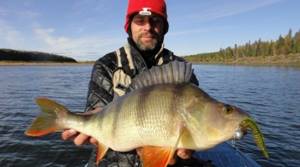
To choose the appropriate wiring, it is worth observing the activity of the fish. If the fish attacks well, then you should resort to uniform or stepped animation with short pauses. A passive predator should be caught using the same reeling, but the pause between reelings should be increased to 15 seconds.
October
In October, the fish behave weaker - if at the beginning of autumn the predator attacked in rainy weather, now this does not happen. Now it is worth considering that the perch sticks to the deep territory of the reservoir, and also does not respond to baits of bright colors that travel at high speed.
November
In early November, perch begins school life, actively feeding and preparing for winter. This month is considered the most favorable for catching a predator. Having discovered a school of active perch, there is a high probability of catching an individual from 1 kg. The search for fish should be carried out only in deep areas from 5 m - it will not stand on the shallows. You only need to animate along the bottom, using a step. The speed of pauses depends only on the activity of the perch. The toothy's preferences can change literally within an hour.
Do-it-yourself lure for perch
Today, there are many different ways to make lures for perch with your own hands.
We will look at the most effective of them:
Spinner “classic”

A “classic” spinner for perch for use at a depth of up to eight meters.
To make it, you should prepare the following tools:
- Pliers.
- Vise.
- Hammer.
- File.
- Scissors for metal.
- Drill.
- Soldering iron.
- Sander.
Materials to be prepared:
- Brass.
- Solder.
- Lead.
- Hooks (with a sharp sting).
- Winding rings.
- Copper (sheet).
- Stainless steel.
This spinner is made in the following sequence:
- Using metal scissors, cut a strip thirty-five millimeters long and nine millimeters wide. Sharpen the edges with a file to make them rounder.
- Place the workpiece on the lead and place a nail in the center. Using a hammer, strike the future profile of the spinner boat.
- Using a soldering iron, fill the resulting cavity with melted lead.
- Using a drill, drill two small holes with a diameter of 1.4 mm on both edges of the spoon.
- Insert a winding ring and a tee into the first hole. Attach fishing line to the second hole.
- Attach a red cambric so that the perch notices the bait even more.
- After applying the brass layer, smooth the surface with a file. If the surface of the spinner is made of brass, then it should be sanded with sandpaper.
Spinner for catching perch in muddy water.
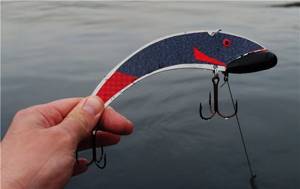
To make it you will need the following tools and materials:
- One hook number twelve.
- Tin.
- Soldering iron.
- Soldering iron acid.
- Brush for applying tin.
- Drill for metal with diameters 2 mm.
- Drill.
- Pliers.
- Pissatizhi.
- Scissors for metal.
- Chrome pipe - one and a half centimeters of any diameter.
This spinner is made in this way:
- Cut a piece of tube into two parts. For the future spinner, one of the resulting halves will be quite enough.
- Bend the pipe half so that a flat surface emerges.
- Cut the plate so that it resembles a fish. To do this you need to use metal scissors. Sharpen with a file.
- Clamp the workpiece with pliers and apply soldering acid to the back of it.
- After this, apply a tin layer with a soldering iron.
- Wash off excess acid with a wet cloth.
- Attach the hook to the spoon.
- Apply another coat of tin.
- Drill another hole and pass a fishing line with a leash through it.
- Sand the edges of the spoon with sandpaper and place the cambric on the hook.
The finished spoon should have the following dimensions:
- Length – thirty-five millimeters.
- The width (at the widest part of the spoon) is ten millimeters.
- The width (in the narrow part of the spoon) is three millimeters.
- The thickness near the hook is three millimeters.
The best lures for perch
The most catchy spinners for catching perch are the following models:
Super Vibrax spinner from Blue Fox

The Super Vibrax Spoon from ]Blue Fox[/anchor] is one of the most popular lures for bass because of its excellent performance and vibrant action. It can be used at a depth of one to two meters.
Model characteristics:
- Type – rotating spoon.
- The petal shape is oval.
- The rotation angle is forty-five degrees.
- Weight – eight grams.
- Features – a weight with acoustic functions when the petal rotates.
- Price – 560 rubles.
2. Spinner Aglia Long Rainbow No. 2 from the manufacturer Mepps

The Aglia Long Rainbow No. 2 spinner from the manufacturer Mepps is a bait that, due to its elongated petal and heavy weight, can perfectly hold the game even in high currents. It should be used on deep lakes.
Model characteristics:
- Type – rotating spoon.
- The petal shape is long (willow).
- The rotation angle is thirty degrees.
- Weight – ten grams.
- Price – 380 rubles.
Niakis No. 8 spinner from Smith

The Niakis No. 8 spinner from Smith is an advanced quality bait that can be used not only to catch perch, but also other species of fish at a depth of one to two meters.
Model characteristics:
- Type – rotating spoon.
- The petal shape is oval.
- The rotation angle is sixty degrees.
- A special feature is the asymmetric core.
- Weight – twelve grams.
- Price – 420 rubles.

